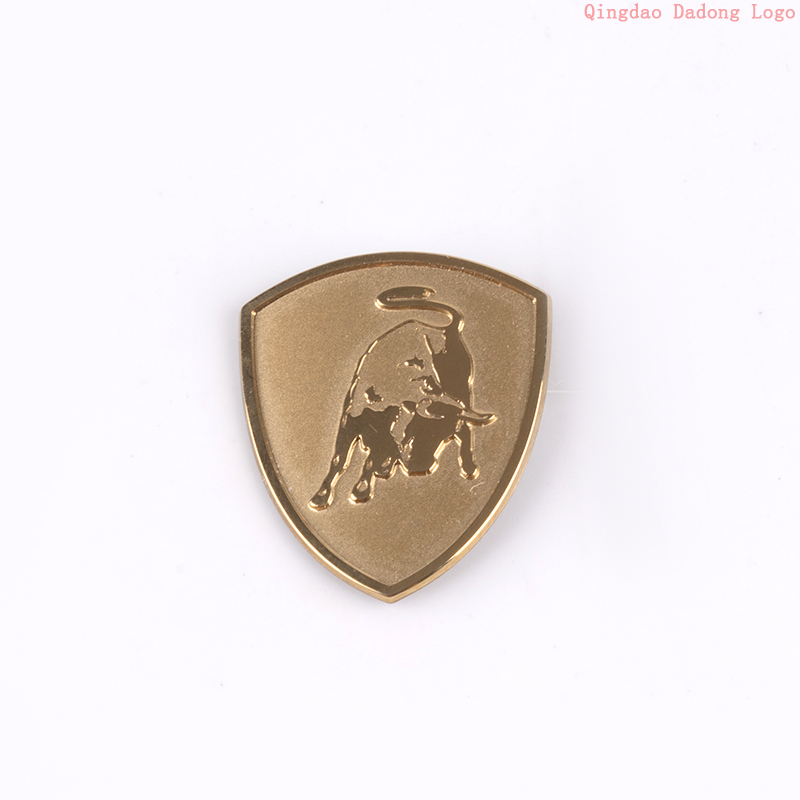NEWS
Knowledge of vacuum electroplating for metal signage
Writer:admin Time:2023-06-26 11:16 Browse:℃
We know that electroplating is a commonly used process in label making, and there are two types of electroplating methods: water electroplating and vacuum electroplating. Water electroplating is a commonly used electroplating method, but vacuum electroplating is relatively rare and unfamiliar to everyone. So today, let's learn about the relevant knowledge of vacuum electroplating.
Vacuum electroplating includes several types: vacuum evaporation plating, sputtering plating, and ion plating. They all deposit various metal and non-metallic thin films on the surface of plastic parts under vacuum conditions, such as distillation or sputtering. Through this method, very thin surface coatings can be obtained, and they have the outstanding advantages of fast speed and good adhesion. However, the price is also high, and there are fewer types of metal that can be operated on. They are generally used as functional coatings for high-end products.
There are two common electroplating processes: water electroplating and vacuum ion plating.
Vacuum ion plating, also known as vacuum coating. Vacuum electroplating is now a popular practice, producing products with strong metal sensitivity and high brightness. Compared to other coating methods, the cost is lower and the pollution to the environment is small. It is now widely used in various industries.
Vacuum electroplating has a wide range of applications, such as ABS material, ABS+PC material, and PC material products. At the same time, due to its complex process, high environmental and equipment requirements, the unit price is higher than that of water electroplating General vacuum electroplating, UV vacuum electroplating, and vacuum electroplating are special. The processes include steam plating, splash plating, gun color, etc.

Vacuum evaporation plating is a method of heating metal under high vacuum conditions to melt, evaporate, and cool it before forming a metal film on the surface of plastic.
Advantages and disadvantages of vacuum electroplating:
1. Simply put, vacuum electroplating cannot pass the 100 grid test due to poor adhesion of UV oil
2. Vacuum electroplating can solve the problem of seven colors, such as glitter silver, magic blue, cracks, water droplets silver, and so on
3. The coating materials used in vacuum electroplating are extensive and easy to meet environmental requirements
4. Wide range of deposition materials: low potential metals such as aluminum, titanium, and zirconium that cannot be deposited by wet electroplating can be deposited. By using reaction gases and alloy targets, coatings from alloys to ceramics and even diamonds can be deposited, and coating systems can be designed according to needs
5. Saving metal materials: Due to the excellent adhesion, density, hardness, and corrosion resistance of vacuum coatings, the deposited coating can be much smaller than the conventional wet electroplating coating, achieving the goal of saving.
6. No environmental pollution: As all coating materials are deposited on the surface of the workpiece through plasma in a vacuum environment, there is no solution pollution, so the harm to the environment is relatively small.
7. The products produced by vacuum electroplating have strong metal sensitivity and high brightness, while compared to other coating methods, the cost is lower.
Although vacuum plated signs are more expensive than regular plated signs, vacuum plated signs have good wear resistance and can pass various friction tests. Generally, plated signs have poorer wear resistance. Customers can choose the appropriate electroplating method based on the purpose and location of the label.
CATEGORIES
LATEST NEWS
CONTACT US
WhatsApp: +8615806503075
Tel: +8615806503075
Email: percy@dadonglogo.com
Addr: 7 Tonghe Road, Pingdu, Qingdao
